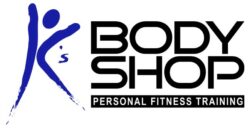No matter what your age or gender, you need to be able to pick stuff up and put it down. Whether it’s a load of laundry, a small child, or a sack of groceries, people lift things (sometimes heavy things) and set them down again on a daily basis. To do this involves being able to deadlift or squat with more than just your body weight – and it’s a functional movement. Unfortunately, many people don’t have the core strength, hip mobility, or proper motor pattern ingrained in their brain to be able to do these activities of daily living correctly. As a result, they compensate by lifting incorrectly, which can cause knee pain or injury to the lumbar disks in the spine. So, before engaging in a strength training program with loaded squats or deadlifts – make sure you master the hip hinge first! It’s one of the most important exercises you’ll ever do, and it can save your knees or low back as well as improve your strength, bone density, and muscle hypertrophy if that is your goal.
Here is a video that has some great tips for learning and mastering the hip hinge:
Another tip that can help some people avoid going into lumbar flexion (bending forward at the waist instead of hinging at the hip) is to reach around and grab a pinch of skin just above your waist in your low back area. If you start to go into spinal flexion, the skin will stretch and you won’t be able to hold the pinch. Or if you have a straight rod – such as a golf club or dowel rod – hold that along the length of your spine to keep your posture in check throughout the movement.
Even after you’ve mastered the hip hinge, keep doing it! The hip hinge serves as a great warm-up – especially before squatting or doing loaded deadlifts. I’ll go over some of the variations of squats and deadlifts in a separate post 🙂
